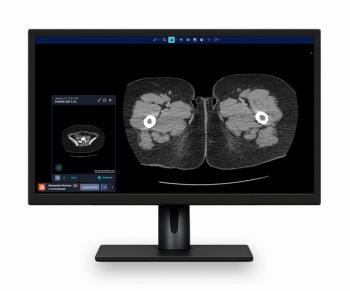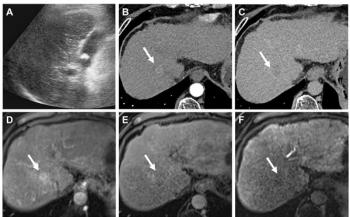
CAD expands beyond cancer detection to treatment management
Computer-aided detection has carved out a role in the last few years as a tool for flagging subtle lesions that have the characteristics of cancer. As demonstrated by new products at the 2005 RSNA meeting, CAD is expanding its scope to find abnormalities or alterations in anatomy that may call for a change in the management of patients.
Computer-aided detection has carved out a role in the last few years as a tool for flagging subtle lesions that have the characteristics of cancer. As demonstrated by new products at the 2005 RSNA meeting, CAD is expanding its scope to find abnormalities or alterations in anatomy that may call for a change in the management of patients.
PowerLook software from iCAD brings digital analytical tools to film-based mammography. With it, radiologists can take a closer look at any region on a mammogram at two, four, or eight times magnification, perform windowing and leveling, and measure suspicious areas simply by touching a monitor screen.
The software allows radiologists to quickly analyze even the most shadowy of mammographic findings, such as a duct that appears normal at first but under magnification turns out to have a very faint plume. Such subtle findings help identify patients who need closer examination but otherwise would likely not be called back for follow-up.
"CAD's job is not necessarily to find cancer. It is to clue radiologists into something that's different," said Janet Sterrit, vice president of the mammography business unit for iCAD. "That requires a change in the method of treatment of a patient. It changes the focus from, 'This is cancer, and it needs a biopsy this instant,' to, 'This is a case that needs an escalated number of screens per year so the patient is monitored.'"
PowerLook is a software option for iCAD's SecondLook Viewer product line, which displays digital renderings of mammograms, including CAD marks, on a high-resolution touchscreen monitor. The SecondLook Viewer is used with the digital-ready SecondLook 300 and film and the digital SecondLook 700 CAD solution.
PowerLook offers window/level adjustment to control brightness and digital zoom to magnify any portion of a digitized image up to eight times. The software has a min/max function that automatically adjusts gray levels to match the brightest and darkest areas in each mammogram, an invert feature that switches light for dark and dark for light to invert the color scale, and a pan function that enables a physician to move easily through enlarged portions of an image. It also applies rules or grids to place tick marks or a full grid over an image so measurements can be converted to actual millimeters or inches.
The same kind of proactive clinical stance taken by iCAD with PowerLook underlies Siemens' prototype TrueD visualization application, which is being developed by the company's computer-aided diagnosis and therapy team in conjunction with its molecular imaging scientists. The goal is to detect changes on PET/CT by comparing scans taken before and after cancer treatment.
TrueD, which was shown at the 2005 RSNA meeting as a work-in-progress, can triangulate rotating maximum intensity projections from PET and CT and apply a number of software tools to create a volume of interest that may be tracked over time to spot treatment-related transformations.
"We want to look at CAD in a broader way to support physicians in their task of detecting change. Especially in oncology, where there is a huge need to compare lesions over time to measure the response to treatment," said Dr. Ingo Schmuecking, director of division marketing for the computer-aided diagnosis and therapy group.
Newsletter
Stay at the forefront of radiology with the Diagnostic Imaging newsletter, delivering the latest news, clinical insights, and imaging advancements for today’s radiologists.




























